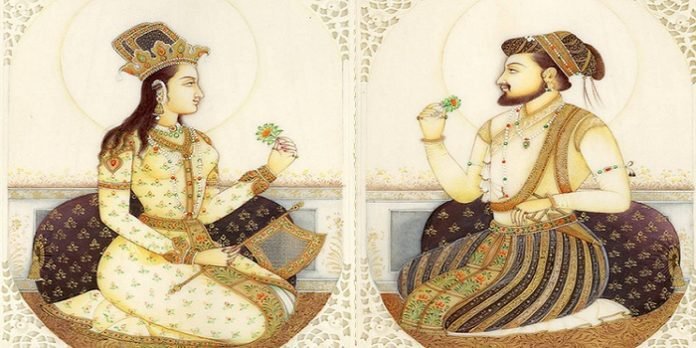Mumtaz Mahal was the beloved wife of Mughal Emperor Shah Jahan, who built the Taj Mahal in her memory. Mumtaz Mahal and Shah Jahan were married in 1612 and had 14 children together. Of these, seven were sons and three of them died at child age, knowing each of the 4 sons with their own unique story. Let us begin Mumtaz Mahal Son: The Untold Story of Her and Her Sons.
Discover the lesser-known story of Mumtaz Mahal and her seven sons, including details about their lives and legacies. Learn more about Mumtaz Mahal’s legacy at the Taj Mahal.
you also like to read: Transfer from Delhi to Agra Taj Mahal by Private Car
So Mumtaz Mahal and Shah Jahan had four sons together, namely Aurangzeb, Dara Shikoh, Shah Shuja, and Murad Baksh. Aurangzeb, whose full name was Mohyuddin Muhammad Aurangzeb, was one of their sons.
“Mumtaz Mahal Son Aurangzeb, was third Shah Jahan and Mumtaz Mahal Son, who was born in 1618. He became one of the most powerful rulers in Mughal history.”
Mumtaz Mahal Son Dara Shikoh: Dara Shikoh was First Shah Jahan and Mumtaz Mahal Son, who was born in 1615. He was known for his intellectual pursuits and patronage of the arts. Dara Shikoh was also an important political figure and was considered by many to be the heir apparent to the Mughal throne.
Mumtaz Mahal Son Shah Shuja: Shah Shuja was Second Shah Jahan and Mumtaz Mahal Son, who was born in 1616. He was appointed governor of Bengal and Orissa by his father but later rebelled against him and was killed in a battle against his brother Aurangzeb.
Mumtaz Mahal Son Aurangzeb: Aurangzeb was third Shah Jahan and Mumtaz Mahal Son, who was born in 1618. He became one of the most powerful rulers in Mughal history, but his reign was marked by religious intolerance and political turmoil.
Mumtaz Mahal Son Murad Baksh: Murad Baksh was the fourth Shah Jahan and Mumtaz Mahal Son, who was born in 1624. He played a minor role in Mughal politics and was executed by Aurangzeb for his involvement in a rebellion.
Which of Mumtaz Mahal’s sons had the most significant impact on the Mughal Empire?
Mumtaz Mahal son Aurangzeb, had the most significant impact on the Mughal Empire. He was a successful military commander and expanded the empire’s territory through a series of conquests. During his reign, he implemented several administrative and legal reforms, including the imposition of a stricter version of Islamic law. However, his reign was also marked by religious intolerance and political turmoil, and his legacy remains controversial to this day.
Mumtaz Mahal son Dara Shikoh, was also an important figure in Mughal history. He was known for his intellectual pursuits and patronage of the arts. Dara Shikoh was also an important political figure and was considered by many to be the heir apparent to the Mughal throne. However, he was defeated by his brother Aurangzeb in a bloody war of succession and was executed soon after.

.
Mumtaz Mahal son Shah Shuja, was appointed governor of Bengal and Orissa by his father Shah Jahan. However, he rebelled against his brother Aurangzeb and was killed in a battle. Shah Shuja is remembered today for his bravery and his role in the Mughal War of Succession.
Mumtaz Mahal son Murad Baksh, played a minor role in Mughal politics and was executed by Aurangzeb for his involvement in a rebellion. Despite his limited impact on the Mughal Empire, Murad Baksh’s tragic story is a reminder of the political and personal rivalries that defined the Mughal court during this period.
“Murad Baksh was the fourth Shah Jahan and Mumtaz Mahal Son, who was born in 1624. He played a minor role in Mughal politics.”
Which Mumtaz Son becomes the next Mughal Emperor? How?
Mumtaz Mahal son Aurangzeb, born to Mumtaz Mahal, became the next Mughal Emperor after a long and bloody war of succession with his brothers. Aurangzeb was the third son of Mumtaz Mahal and Shah Jahan and was born in 1618. He was known for his piety and devotion to Islam and spent much of his early life in military campaigns and administrative duties.
Aurangzeb’s claim to the throne was challenged by his brothers, particularly Dara Shikoh, who was favored by their father. After a series of battles and intrigues, Aurangzeb emerged victorious and was crowned emperor in 1658. His reign lasted nearly 50 years, making him one of the longest-reigning emperors in Indian history.

.
During his reign, Aurangzeb expanded the Mughal Empire’s territory through a series of military campaigns and conquests. He implemented several administrative and legal reforms, including the imposition of a stricter version of Islamic law. However, his reign was also marked by religious intolerance and political turmoil. He also faced several rebellions and uprisings, including one led by his own brother, Dara Shikoh.
Despite his controversial legacy, Aurangzeb’s reign saw many notable achievements. He built several monuments and public works projects, including the Badshahi Mosque, one of the largest mosques in the world.
“Shah Shuja was Second Shah Jahan and Mumtaz Mahal Son, who was born in 1616. He was appointed governor of Bengal and Orissa by his father.”
In conclusion, Mumtaz Mahal son Aurangzeb became the next Mughal Emperor after a long and bloody war of succession. Despite his accomplishments, his reign was also marked by religious intolerance and political turmoil, and his legacy remains controversial to this day. Nevertheless, Aurangzeb’s impact on the Mughal Empire and on Indian history as a whole cannot be overstated.
Mumtaz Mahal son Dara Shikoh: The Visionary Prince Who Bridged the Divide Between Hinduism and Islam
Mumtaz Mahal son Dara Shikoh was one of the sons of Mumtaz Mahal and Shah Jahan, born in 1615. He was known for his intellectual pursuits and patronage of the arts, particularly Sufi poetry and music. Dara Shikoh was also an important political figure and was considered by many to be the heir apparent to the Mughal throne.
Dara Shikoh commissioned translations of several Hindu texts into Persian, including the Upanishads, which he called the “Kitab al-Maknun” or the “hidden book.” He believed that the Hindu and Muslim traditions shared a common spiritual heritage and sought to reconcile the two faiths.
Dara Shikoh’s intellectual pursuits and liberal views made him a controversial figure in the Mughal court. His younger brother Aurangzeb accused him of being too tolerant towards non-Muslims and challenged his claim to the throne. After a series of battles and intrigues, Aurangzeb emerged victorious and had Mumtaz Mahal son Dara Shikoh executed in 1659.
Despite his tragic end, Dara Shikoh’s legacy as a bridge-builder between different religious and philosophical traditions has been celebrated by many in India. He is remembered as a symbol of the pluralistic and inclusive culture of the Mughal Empire, which was marked by a rich exchange of ideas and traditions between different communities.
What other contributions did Dara Shikoh make to Indian culture?
Mumtaz Mahal son Dara Shikoh made several other notable contributions to Indian culture, in addition to his efforts to bridge the divide between Hinduism and Islam.
For example, he was a patron of the arts and a lover of poetry, music, and calligraphy. He supported many artists and writers during his lifetime, He also wrote several treatises on Sufism and Islamic philosophy, which are considered among the most important works of their kind in the Indian subcontinent.

.
Mumtaz Mahal son Dara Shikoh was also an advocate of scientific inquiry and encouraged the study of astronomy, mathematics, and other sciences.
He commissioned translations of several scientific texts into Persian, including Euclid’s “Elements” and Ptolemy’s “Almagest.”
You also like to read: Taj Mahal History and Facts: A Comprehensive Guide
Furthermore, Mumtaz Mahal son Dara Shikoh was a supporter of architecture and commissioned several notable buildings, including the Dara Shikoh Library in Delhi.
Overall, Dara Shikoh’s contributions to Indian culture were diverse and far-reaching. He was a polymath who excelled in many different fields and was committed to promoting intellectual and cultural exchange between different communities.

































